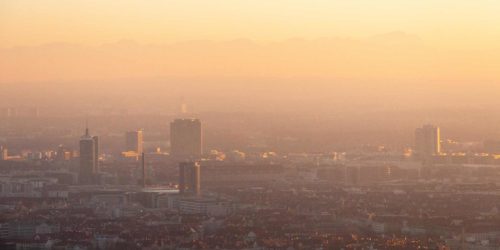
Health Air Quality Impacts of Buildings Emissions
What is the Health Impact of Buildings in Your State?
Outdoor air pollution from buildings harms public health across the United States
Buildings release many harmful pollutants outdoors. Particulate matter (PM2.5) is a particularly dangerous pollutant due to its tiny size—the microscopic particles can penetrate deep into the lungs and even the bloodstream.
The map below represents outdoor air pollution health impacts, represented in early deaths and costs, from burning fuels—including gas, oil, biomass, and wood—in residential and commercial buildings. The health impacts depicted are for 2017, the most recent available data.
Click on the map to see the detailed health impact breakdown by state.
Health Impact: least to greatest
Seventy million homes and businesses across the United States burn gas, oil, or propane on-site to heat space and water and cook food, generating 600 million tons of CO2 each year—one-tenth of total US emissions. While people generally understand that the pollution from buildings threatens climate action, many are not fully aware of its threat to public health.
The data used for the map focuses only on PM2.5 pollution, which includes primary PM2.5 as well as four precursor pollutants that react in the atmosphere to become secondary PM2.5: nitrogen oxides (NOx), sulfur dioxide (SO2), volatile organic compounds (VOCs), and ammonia (NH3). (The data portrays the impacts of building pollution originating in the state but not impacts from cross-state pollution. Furthermore, these figures are underestimates and do not account for health impacts from exposure to indoor air pollution, direct exposure to other outdoor pollutants such as ozone or NOx, or other health burdens like asthma or emergency room visits.)
Although some states, such as New York and California, share much of the health impact, it is important to note that all states suffer from building pollution. Air pollution from buildings is a threat to public health and must be recognized and addressed accordingly. Fortunately, building pollution is largely preventable and can be mitigated by transitioning to clean electricity.
The data for the map is from a Harvard T. H. Chan School of Public Health study, published in Environmental Research Letters in May 2021.
Additionally, check out RMI’s Q&A blog on the detailed findings of the study.
Donate
DOUBLE your impact on our shift to clean energy!
A generous donor is doubling all gifts, up to a total of $100,000, through June 30, 2024. Your gift helps RMI increase access to safer, healthier, and cleaner energy in more communities.
The shift to clean energy starts locally. It starts with you.
Donate